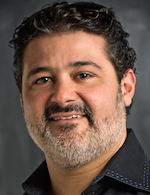 |
|
|
Now that your keyword initiative is up and running, you’re breathing a well-deserved sigh of relief. However, the work is never really over. You must keep a pulse on how well your efforts are paying off, meaning whether or not you are, indeed, increasing your rank in the search engines. In addition, you must keep a pulse on new or hot keywords as these happen, continuing to use these to drive content ideas.
Some writers and editors will get excited about this approach and be curious about the traffic metrics and specific results for the content that they created. They will also welcome ideas for content based on the words people are searching. Others will view it as a chore and eventually lose interest.
Measuring traffic by article is a great way to really understand which of your articles are popular, where your strategy is working, and where it needs to be tweaked. It’s also a great way to keep writers engaged in the process. They will be much more interested in seeing how their particular article performed and how many times it was read based on a search than in seeing your groups’ statistics as a whole.
Data can be collected daily, weekly or monthly and reported regularly in a spreadsheet, with content grouping in Google analytics or another method of your choice. Incentives like monthly contests that reward the writers/editors who are driving new and repeat visits to the site can be fun and effective in keeping your writers committed to the process.
Organize the Process
Make it easy for your writers to use the keyword and images that will make their articles successful by having resources well organized.
Image Tags and Titles
Put your images in a folder called ‘images’.
Configure your content management system (CMS) to give images sensible, human-readable names, like ‘aj-mag-cover.png’, instead of ‘AJ_OFC_425%20x%20552.png’. If your CMS can’t do this, then train everyone to do it manually, and insist that resources must be appropriately named and filed in appropriate folders.
Be sure to add alt tags and image descriptions too. Internet browsers do not know what your images are unless you tell them. If your images are not easily searched, you’re wasting an additional opportunity for readers to find your content.
Why is this important? Because images show up in search results—and people are ten times more likely to click on a search result with a photo than one without. If you have the first picture of a man walking on Mars, you want that photo ranking on page one of any search engine, and you have the right to expect it. Photos often carry the top spots, and it’s easier to rank for a photo than a text page. The same goes for video. If you want your photos and videos to rank, you have to explain the photo to search engine.
Mobile
Google will soon roll out a new mobile algorithm update, and publishers stand to take a hit from it. Studies have shown that publishers receive as much as 40% of their traffic from mobile users, so the new algorithm is important. However, this is another series of articles for another time, and we will tackle it as we better understand the new algorithm. If you’re concerned about it now, give us a call.
Long Term Success
SEO is an ongoing process that requires full buy-in from stakeholders across the organization, including the C suite, technical, editorial, marketing, product and business development staff.
Early and frequent training is the best way to ensure everybody understands the strategy and how they contribute to making it work. Of course, some employees will need just a high level overview, while others will need the details, as it will impact their everyday job.
Seek out custom tailored SEO training programs and information-sharing sessions from K-9 or elsewhere to help your organization maximize traffic from search early on in your implementation.
Once you’ve conquered the tasks we’ve talked about in this article series, you still have work to do. This includes fine tuning your existing article inventory with appropriate keywords and working with your staff to ensure a consistent level of training and implementation. However, these first steps are the easiest, and will have a huge impact.
We are here to help you with the entire process. We have seen many publishers put in the effort to train their teams on SEO in the past few years. At the same time, there are plenty of publishers out there who still need to incorporate SEO into their content, if they want their brand to grow online. If you want help, feel free to reach out and connect with us.
If you would like to learn more about SEO and how it can energize your magazine’s presence on the web and get your content to page one in the search engines; put the magazine down and pick up the phone.
Call us at (416) 653-2221 and book a free consultation.
 |
|
|
Norm is Creative Director and founder of K9 strategy+design and has 25 years of experience directing, strategizing and designing for publishing clients such as Rogers, Ski Canada Magazine, Alternatives Journal, Homes & Cottages Magazine and Metro News. Over the years, Norm has also assisted TELUS, Bell, Sirius, BMO Nesbitt Burns, American Express and countless entrepreneurial, professional and non-profit clients with their branding and communications opportunities.
|
|
2017 (6)
|

